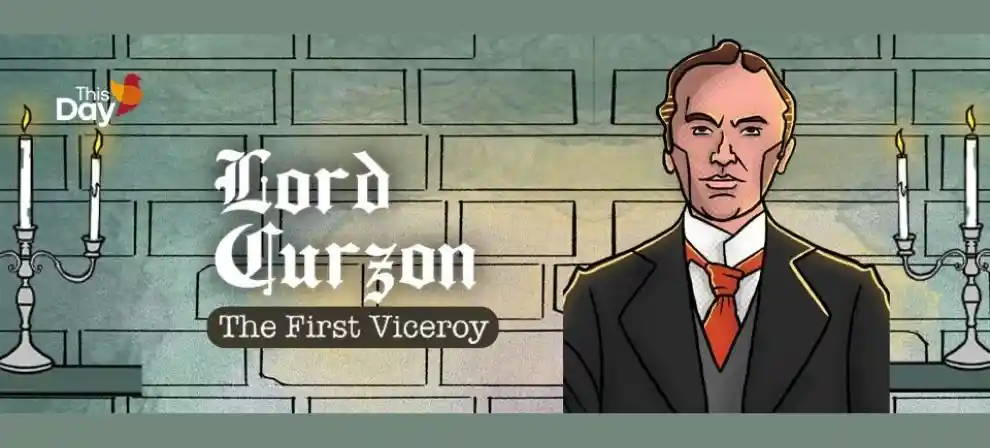Lord Curzon : The First Viceroy
Amid the Partition of Bengal, mismanagement of famine, and epitome of the Britishers' divide-and-rule policies, Lord Curzon, was appointed as the Viceroy of India.

Lord Curzon. Illustrated by Abhishek Kalyanpurkar: Visual Storyteller at ThisDay
In the approximate 200 years that India was a colony, it was the most precious jewel in the crown of the British empire. Although the annexation wasn't an absolute process and the colonizers' consolidated power only gradually, the revolt of 1857 left a brutal mark on their administration. Despite the constant struggle to fight the foreigners, India was made a direct colony under the British crown following the First War of Independence and the East India Company was reduced to mere mercenary power. The supreme administerial post under the Crown on the subcontinent was of Viceroy, and considering the complexities of this land, it was one major responsibility.
On this day, Lord Curzon was appointed as the Viceroy of India. He had taken over immediately after the resistance of Northwestern region and took upon the task of consolidating the British control over South Asia, thus engaging in constant trade and struggles in the middle eastern regions as well as in Tibet and other regions. Shortly afterwards he established the North-West Frontier Province and pursued a policy of force and conciliation to keep the area under control.
Surprisingly Curzon has been a much-debated figure in the aspect of India's governorship. Records claim him to be an authoritarian but also compassionate, two extremely conflicting aspects. He was one of the youngest Viceroy's of India and did surely enjoy the splendour. He demanded allegiance from the local governorship.
We see him reducing taxes and ordering strict action against white supremacy which was unconventional at the time. After his tours, he took on the restoration of Taj Mahal. He also drew on several commissions to enquire into education, police, irrigation, administration and other affairs. It was on the reports of these commissions that he drew on the legislation for the country.
The most controversial move by Curzon was his decision to partition Bengal province in 1905. This drew on a large scale opposition as the partition was intended to cut out Bihar, Assam and Orrisa from Bengal and separate eastern Bengal from western. This decision was wrapped in the garbs of administrative purpose, but a hidden conspiracy raised when private letters of Curzon's secretary stated that "United Bengal was a threat to the regime". Contemporary historians saw this move as a part of the 'divide and rule' policy of Britishers. The agitated uproar against the decision led them to converge Bengal back, in 1911, now upsetting Muslim Bengalis, as this stripped them of their advantages.
Another tragedy struck when a famine struck the country under Viceroyalty of Curzon. Millions of people died along with other collateral damages. Curzon is often criticised for doing too less to curb the effects of the famine. Though he opened up relief camps, he also put a limit to rations with the intention of neither giving too much nor taking too much in the interest of public and philanthropy.
The most controversial move by Curzon was his decision to partition Bengal province in 1905. This drew on a large scale opposition as the partition was intended to cut out Bihar, Assam and Orrisa from Bengal and separate eastern Bengal from western. This decision was wrapped in the garbs of administrative purpose, but a hidden conspiracy raised when private letters of Curzon's secretary stated that "United Bengal was a threat to the regime". Contemporary historians saw this move as a part of the 'divide and rule' policy of Britishers. The agitated uproar against the decision led them to converge Bengal back, in 1911, now upsetting Muslim Bengalis, as this stripped them of their advantages.
Another tragedy struck when a famine struck the country under Viceroyalty of Curzon. Millions of people died along with other collateral damages. Curzon is often criticised for doing too less to curb the effects of the famine. Though he opened up relief camps, he also put a limit to rations with the intention of neither giving too much nor taking too much in the interest of public and philanthropy.

Lord Curzon; Image Source: Wikimedia Commons


